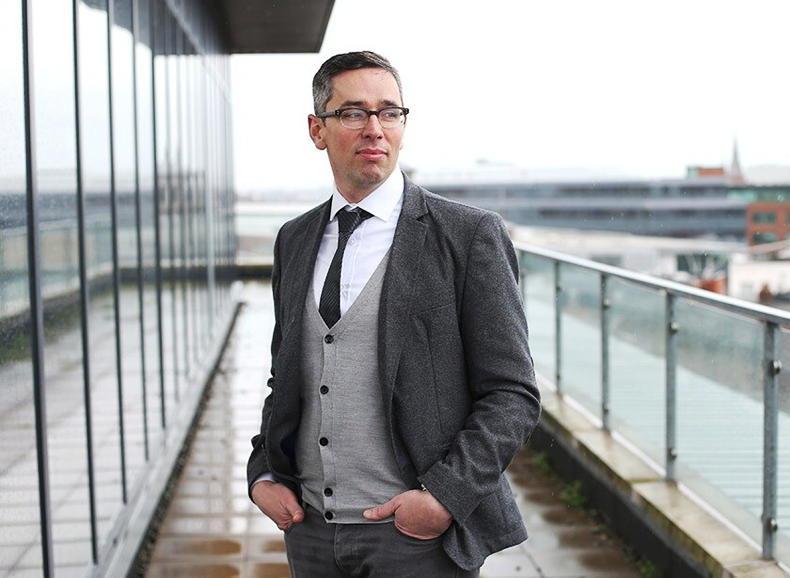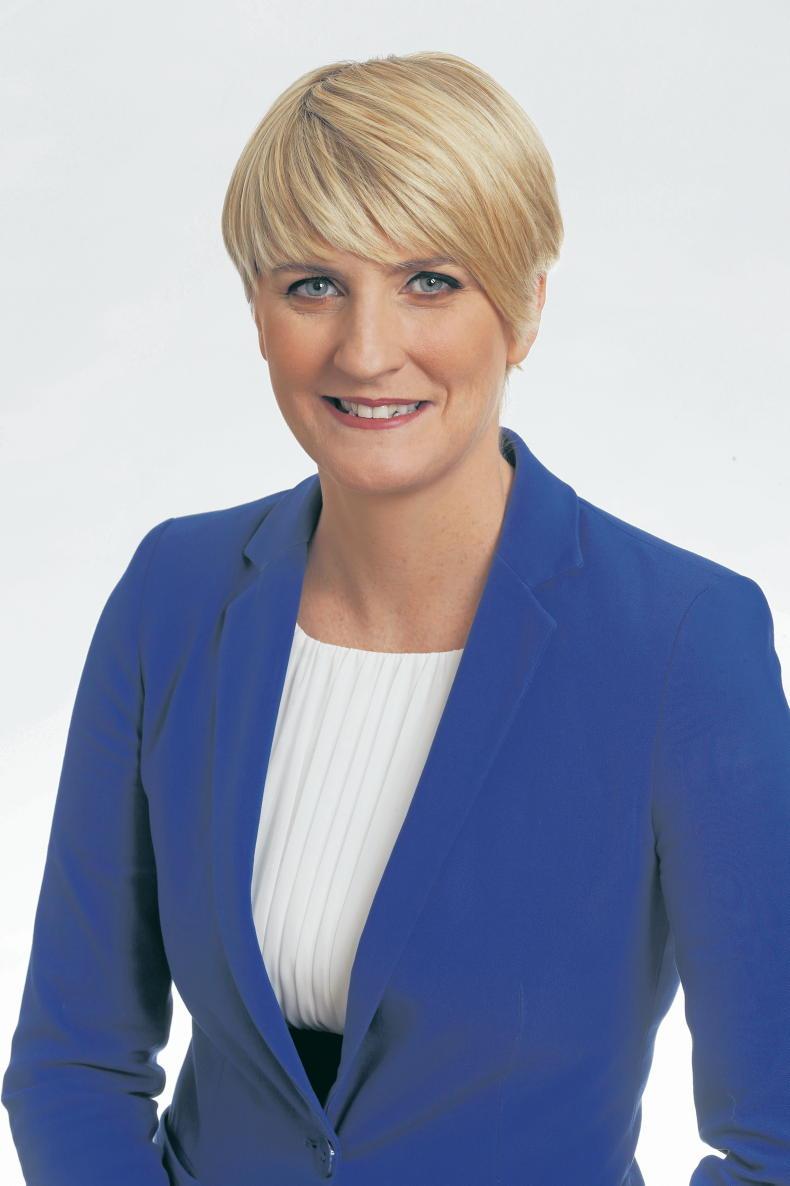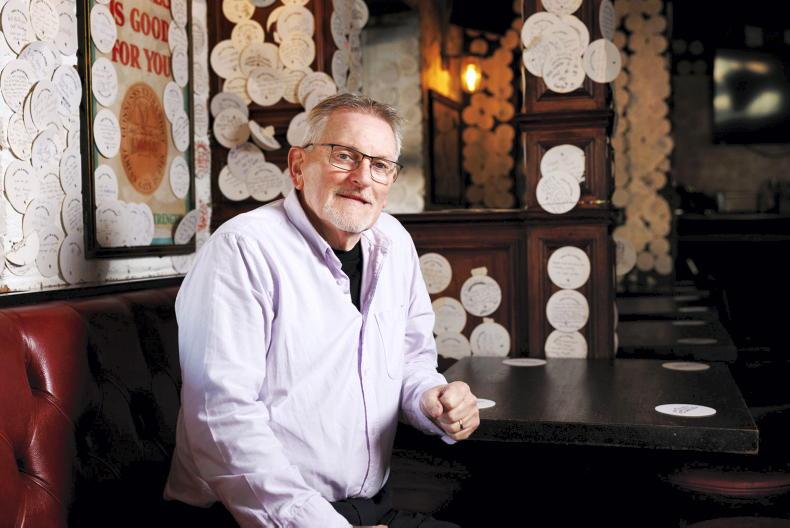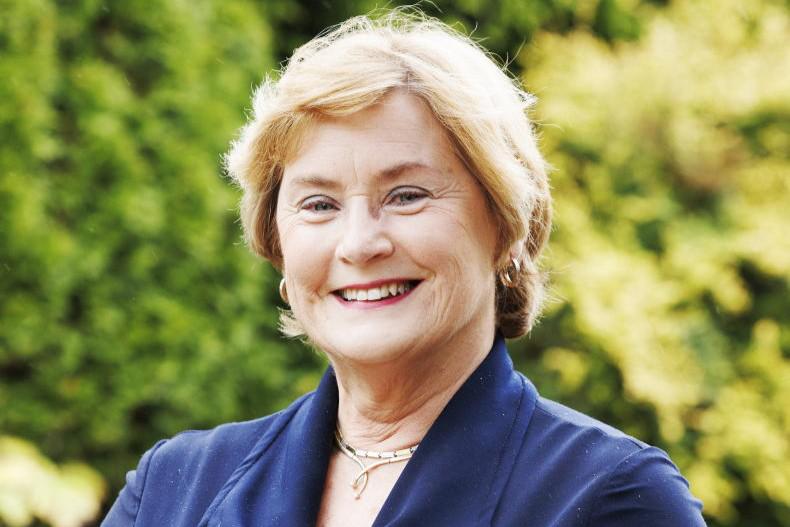The reality is some people are surviving longer than others when they have cancer. The better off you are, it seems, the more likely you are to be able to tell a tale of survival five years on. Better off meaning having a job, a reasonable income and education.
Given all the money that has been invested in cancer care, particularly since the establishment of centres of excellence in 2007, you would think that care inequalities would have been ironed out at this stage; that one citizen would have as good a chance as the next. However, this isn’t the case.
If you live in a poorer socio-economic area, you are almost 10% less likely to recover from cancer than your counterparts in wealthier locations.
That’s the bottom line of the Ireland Country Report launched by the European Cancer Organisation and the Irish Cancer Society at the Joint Euro-American Forum on Cancer in Farmleigh in April of this year.
Location, location
Who is falling between the care cracks and why?
According to the report, the cancer survival rate for people in the wealthiest socio-economic groups after five years currently stands at 68% while in the most deprived socio-economic groups, the five year survival rate is 59% – almost a 10% difference.
“This report highlights the significant cancer inequalities faced by people living in the most deprived areas of Ireland,” says Steve Dempsey, Director of Advocacy and Communications with the Irish Cancer Society.
“We know that people from lower socio-economic backgrounds are far more likely to get cancer, be diagnosed at a later stage and die than those on higher incomes. Many survivors also don’t have the support they need to cope with the long-term physical, emotional, and financial impact of the disease.”

Steve Dempsey, Director of Advocacy & Communications with the Irish Cancer Society.
No geographical breakdown of the figures is available in the ECO report, but the inequality analysis and data is based on the Pobal Deprivation Index. This, in turn, is based on Central Statistics Office information related to aspects like employment and education levels.
It is used by Government departments and State agencies to identify geographic disadvantage. This is so resources and services can be targeted towards communities most in need. An example of how this is utilised is in the selection of schools for the DEIS scheme for disadvantaged students.
According to the Pobal map, the most deprived areas of the country are still near the centre of cities, with some rural towns also showing pockets of disadvantage too.
Rural disadvantage
Many isolated rural areas situated in the north-west – Donegal and Mayo as well as parts of Sligo, Cavan, Leitrim, Longford and Roscommon, for example, continue to have higher levels of deprivation than the south-east, Pobal states.
The Irish Cancer Society points out to Irish Country Living that research carried out by NUI Maynooth in the past shows that neighbouring areas can have vast differences in cancer mortality outcomes.
In Castleknock in Dublin, for example, there were 128 cancer deaths per 100,000 in the population. However, if you drove 12 minutes up the road to Blakestown, the death rate was three times higher, with 381 cancer deaths per 100,000.
A National Cancer Registry of Ireland (NCRI) Cancer Inequalities in Ireland by Deprivation report also reiterated that. In more affluent areas, for example, there is a higher incidence of breast, prostate, melanoma and non-melanoma skin cancer.
In less affluent areas, there is a higher incidence of stomach, lung and cervical cancer as well as a higher risk of later presentation of breast and prostate cancer.
In 2024, cancer is still the single biggest killer in Ireland, responsible for 30% of deaths. An estimated 42,000 Irish people get cancer each year and 9,620 Irish people die of it.
But back to who is falling between the cracks and why? What are the factors that contribute to this inequality of care and lower survival rates? There are several, according to the Advocacy Director.
Late presentation
The first is emergency presentation, says Steve – that is people not going to the doctor soon enough when they experience symptoms or not having enough awareness to recognise symptoms.
“Some 14% of people get their cancer diagnosis after presenting at emergency departments, usually at a more advanced stage. Behind this statistic are real people, who are likely older and from more deprived areas,” says Steve.
Cancer screening
The second is cancer screening – and education and awareness around the need to participate in this.
“The earlier cancer is caught, the better but there are regional disparities in the uptake of BreastCheck, BowelScreen and CervicalCheck. The incidence of breast, colorectal (bowel) and cervical cancer tends to be higher in urban areas. Living in Dublin is linked to increased participation in BreastCheck. Some evidence suggests that participation is lowest in the south-east and the border and west regions. Similarly, attendance at CervicalCheck was highest in Dublin, but lowest in the south-east region.”
Health insurance
The third relates to some people having private medical insurance and being able to access new medicines more easily. That’s because many new, expensive drugs are not yet available for free for public patients.
“Inequality between public and private patients is growing, particularly in terms of access to new medicines,” an ICS spokesperson says.
At present there is controversy over the new cancer-treating agent trastuzumab deruxtecan (Enhertu), only being accessible by patients who have health insurance.
Staffing crisis
The staffing crisis in the HSE is the fourth reason.
“There are major challenges in attracting and retaining healthcare professionals in the Irish oncology system,” says Steve. “There are roughly six radiation machines lying idle across St Luke’s Oncology Network in Dublin, Cork University Hospital and Galway University Hospital.”
Rural travel costs
Cost of travel is cited as the final reason. “People in rural areas may face additional costs to travel to treatment centres. In addition, they may have to travel greater distances – for example, in the the event that they have to travel to Dublin for appointments,”says Steve. “The costs of travel to hospitals can be a barrier to regular attendance at treatment.”
Many consultants believe that if more funding isn’t put into cancer care, Ireland is at risk of ‘going backwards.’
While they and the Irish Cancer Society’s CEO, Averil Power, acknowledge that centralisation of cancer surgeries has made ‘a massive difference’ for patients and that the investment in cancer care under the first two national cancer strategies did improve outcomes significantly, they don’t want the effort to ease off.
“We need to ensure that every Irish person, regardless of their background or income, has the best possible chance of surviving cancer,” Averil says.

Averil Power, CEO of the Irish Cancer Society. \ Conor McCabe Photography
What’s needed now
Steve Dempsey believes that a serious commitment is needed from the Irish Government to prioritise and resource the full delivery of Ireland’s current National Cancer Strategy.
“We need the Government to commit to proper multi-annual funding of the National Cancer Strategy to ensure that every Irish person, regardless of their location, background, or income, has access to the best treatment and has the best possible chance of surviving cancer.” He continues, “We also need greater awareness raising for participation in screening across the country, particularly in areas where there is low uptake.”
Ireland has the second highest rate of incidence of cancer among the 27 EU member states, (EU Commission report 2023) hence, the belief that cancer services need Government focus and investment more than ever before. The Government, in Dáil responses to questions on this issue, countered by saying that the mortality rate for all cancers has dropped by 11% over the past decade.
Tánaiste Micheal Martin also stated that Government is currently seeking a focus on productivity before granting additional funding and that budgets in 2021 and 2023 provided almost €100m for new drugs which enabled the HSE to approve 148 new drugs, 61 of which were for cancer.
However, Minister for Health, Stephen Donnelly, did draw attention to Ireland being ‘a laggard’ when it comes to cancer trials.
Message for farming families from the Irish Cancer Society
You know your body best. If you notice any persistent or unusual change in your body, talk to your GP.
Find out more about signs and symptoms of cancer at cancer.ie.
The Irish Cancer Society also encourages everyone of screening age to make sure they are registered.
Anyone with questions or concerns about cancer, can contact the Irish Cancer Society Support Line on 1800 200 700 or email supportline@irishcancer.ie.
There are eight designated cancer centres for the provision of cancer surgery for adults. These include:
• Beaumont Hospital
• Cork University Hospital
• Mater Misericordiae University Hospital
• St James’s Hospital
• St Vincent’s University Hospital
• University Hospital Galway
• University Hospital Limerick
• University Hospital Waterford.
The majority, but not all, cancer surgeries take place in the designated cancer centres. For breast cancer surgery, there is a satellite unit in Letterkenny General Hospital.
The reality is some people are surviving longer than others when they have cancer. The better off you are, it seems, the more likely you are to be able to tell a tale of survival five years on. Better off meaning having a job, a reasonable income and education.
Given all the money that has been invested in cancer care, particularly since the establishment of centres of excellence in 2007, you would think that care inequalities would have been ironed out at this stage; that one citizen would have as good a chance as the next. However, this isn’t the case.
If you live in a poorer socio-economic area, you are almost 10% less likely to recover from cancer than your counterparts in wealthier locations.
That’s the bottom line of the Ireland Country Report launched by the European Cancer Organisation and the Irish Cancer Society at the Joint Euro-American Forum on Cancer in Farmleigh in April of this year.
Location, location
Who is falling between the care cracks and why?
According to the report, the cancer survival rate for people in the wealthiest socio-economic groups after five years currently stands at 68% while in the most deprived socio-economic groups, the five year survival rate is 59% – almost a 10% difference.
“This report highlights the significant cancer inequalities faced by people living in the most deprived areas of Ireland,” says Steve Dempsey, Director of Advocacy and Communications with the Irish Cancer Society.
“We know that people from lower socio-economic backgrounds are far more likely to get cancer, be diagnosed at a later stage and die than those on higher incomes. Many survivors also don’t have the support they need to cope with the long-term physical, emotional, and financial impact of the disease.”

Steve Dempsey, Director of Advocacy & Communications with the Irish Cancer Society.
No geographical breakdown of the figures is available in the ECO report, but the inequality analysis and data is based on the Pobal Deprivation Index. This, in turn, is based on Central Statistics Office information related to aspects like employment and education levels.
It is used by Government departments and State agencies to identify geographic disadvantage. This is so resources and services can be targeted towards communities most in need. An example of how this is utilised is in the selection of schools for the DEIS scheme for disadvantaged students.
According to the Pobal map, the most deprived areas of the country are still near the centre of cities, with some rural towns also showing pockets of disadvantage too.
Rural disadvantage
Many isolated rural areas situated in the north-west – Donegal and Mayo as well as parts of Sligo, Cavan, Leitrim, Longford and Roscommon, for example, continue to have higher levels of deprivation than the south-east, Pobal states.
The Irish Cancer Society points out to Irish Country Living that research carried out by NUI Maynooth in the past shows that neighbouring areas can have vast differences in cancer mortality outcomes.
In Castleknock in Dublin, for example, there were 128 cancer deaths per 100,000 in the population. However, if you drove 12 minutes up the road to Blakestown, the death rate was three times higher, with 381 cancer deaths per 100,000.
A National Cancer Registry of Ireland (NCRI) Cancer Inequalities in Ireland by Deprivation report also reiterated that. In more affluent areas, for example, there is a higher incidence of breast, prostate, melanoma and non-melanoma skin cancer.
In less affluent areas, there is a higher incidence of stomach, lung and cervical cancer as well as a higher risk of later presentation of breast and prostate cancer.
In 2024, cancer is still the single biggest killer in Ireland, responsible for 30% of deaths. An estimated 42,000 Irish people get cancer each year and 9,620 Irish people die of it.
But back to who is falling between the cracks and why? What are the factors that contribute to this inequality of care and lower survival rates? There are several, according to the Advocacy Director.
Late presentation
The first is emergency presentation, says Steve – that is people not going to the doctor soon enough when they experience symptoms or not having enough awareness to recognise symptoms.
“Some 14% of people get their cancer diagnosis after presenting at emergency departments, usually at a more advanced stage. Behind this statistic are real people, who are likely older and from more deprived areas,” says Steve.
Cancer screening
The second is cancer screening – and education and awareness around the need to participate in this.
“The earlier cancer is caught, the better but there are regional disparities in the uptake of BreastCheck, BowelScreen and CervicalCheck. The incidence of breast, colorectal (bowel) and cervical cancer tends to be higher in urban areas. Living in Dublin is linked to increased participation in BreastCheck. Some evidence suggests that participation is lowest in the south-east and the border and west regions. Similarly, attendance at CervicalCheck was highest in Dublin, but lowest in the south-east region.”
Health insurance
The third relates to some people having private medical insurance and being able to access new medicines more easily. That’s because many new, expensive drugs are not yet available for free for public patients.
“Inequality between public and private patients is growing, particularly in terms of access to new medicines,” an ICS spokesperson says.
At present there is controversy over the new cancer-treating agent trastuzumab deruxtecan (Enhertu), only being accessible by patients who have health insurance.
Staffing crisis
The staffing crisis in the HSE is the fourth reason.
“There are major challenges in attracting and retaining healthcare professionals in the Irish oncology system,” says Steve. “There are roughly six radiation machines lying idle across St Luke’s Oncology Network in Dublin, Cork University Hospital and Galway University Hospital.”
Rural travel costs
Cost of travel is cited as the final reason. “People in rural areas may face additional costs to travel to treatment centres. In addition, they may have to travel greater distances – for example, in the the event that they have to travel to Dublin for appointments,”says Steve. “The costs of travel to hospitals can be a barrier to regular attendance at treatment.”
Many consultants believe that if more funding isn’t put into cancer care, Ireland is at risk of ‘going backwards.’
While they and the Irish Cancer Society’s CEO, Averil Power, acknowledge that centralisation of cancer surgeries has made ‘a massive difference’ for patients and that the investment in cancer care under the first two national cancer strategies did improve outcomes significantly, they don’t want the effort to ease off.
“We need to ensure that every Irish person, regardless of their background or income, has the best possible chance of surviving cancer,” Averil says.

Averil Power, CEO of the Irish Cancer Society. \ Conor McCabe Photography
What’s needed now
Steve Dempsey believes that a serious commitment is needed from the Irish Government to prioritise and resource the full delivery of Ireland’s current National Cancer Strategy.
“We need the Government to commit to proper multi-annual funding of the National Cancer Strategy to ensure that every Irish person, regardless of their location, background, or income, has access to the best treatment and has the best possible chance of surviving cancer.” He continues, “We also need greater awareness raising for participation in screening across the country, particularly in areas where there is low uptake.”
Ireland has the second highest rate of incidence of cancer among the 27 EU member states, (EU Commission report 2023) hence, the belief that cancer services need Government focus and investment more than ever before. The Government, in Dáil responses to questions on this issue, countered by saying that the mortality rate for all cancers has dropped by 11% over the past decade.
Tánaiste Micheal Martin also stated that Government is currently seeking a focus on productivity before granting additional funding and that budgets in 2021 and 2023 provided almost €100m for new drugs which enabled the HSE to approve 148 new drugs, 61 of which were for cancer.
However, Minister for Health, Stephen Donnelly, did draw attention to Ireland being ‘a laggard’ when it comes to cancer trials.
Message for farming families from the Irish Cancer Society
You know your body best. If you notice any persistent or unusual change in your body, talk to your GP.
Find out more about signs and symptoms of cancer at cancer.ie.
The Irish Cancer Society also encourages everyone of screening age to make sure they are registered.
Anyone with questions or concerns about cancer, can contact the Irish Cancer Society Support Line on 1800 200 700 or email supportline@irishcancer.ie.
There are eight designated cancer centres for the provision of cancer surgery for adults. These include:
• Beaumont Hospital
• Cork University Hospital
• Mater Misericordiae University Hospital
• St James’s Hospital
• St Vincent’s University Hospital
• University Hospital Galway
• University Hospital Limerick
• University Hospital Waterford.
The majority, but not all, cancer surgeries take place in the designated cancer centres. For breast cancer surgery, there is a satellite unit in Letterkenny General Hospital.










SHARING OPTIONS